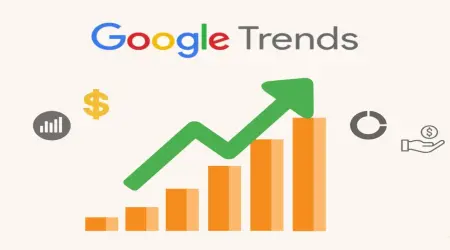

Are Mortgage Rates at a Tipping Point? Trump’s Tariffs and the Housing Market Crisis
Is Mortgage Rates at a Tipping Point? Why Trump's Tariffs Have the Housing Market on Edge
Introduction: The Housing Market Faces a Perfect Storm
The U.S. housing market is no stranger to volatility, but 2025 is shaping up to be a pivotal year. With mortgage rates teetering on the edge of historic highs and the re-emergence of aggressive trade policies under a Trump administration, the stakes have never been higher. The question on everyone’s mind: Are mortgage rates at a tipping point? And more critically, how will Trump’s proposed tariffs impact an already strained housing market?
At Temploop, we dive deep into the forces shaping the housing landscape. This comprehensive word guide unpacks the interplay between mortgage rates, tariffs, inflation, and housing affordability. Whether you're a homeowner, a prospective buyer, or an investor, this article will arm you with the insights needed to navigate this turbulent market. Let’s explore why the housing market is on edge and what it means for you.
1. The Current State of Mortgage Rates in 2025
Historical Context: How We Got Here
To understand whether mortgage rates are at a tipping point, we must first look at their trajectory. In the early 2020s, the U.S. enjoyed historically low mortgage rates, with 30-year fixed rates dipping below 3% during the pandemic. These low rates fueled a housing boom, driving home prices to record highs as demand outstripped supply.
However, inflation surged in 2022, prompting the Federal Reserve to raise interest rates aggressively. By 2023, 30-year fixed mortgage rates climbed above 7%, a level not seen in over two decades. In 2025, rates have stabilized somewhat, hovering between 6.5% and 7.5%, but they remain a far cry from the sub-3% era.
Factors Driving Mortgage Rates Today
Mortgage rates are influenced by a complex web of factors, including:
Federal Reserve Policy: The Fed’s benchmark interest rate directly impacts borrowing costs. While rate hikes have slowed, the Fed remains cautious amid persistent inflation.
Inflation Expectations: Lenders price mortgages based on future inflation forecasts. Higher inflation erodes the value of fixed-rate payments, pushing rates up.
Bond Yields: Mortgage rates track the 10-year Treasury note yield, which reflects investor confidence and economic outlook.
Global Economic Conditions: Trade policies, including tariffs, can disrupt global markets, influencing U.S. borrowing costs.
Are We at a Tipping Point?
A “tipping point” implies a threshold beyond which significant changes occur. For mortgage rates, this could mean rates climbing to levels (e.g., 8% or higher) that choke off demand, stall home sales, and depress prices. Alternatively, a tipping point could involve rates stabilizing or falling, spurring a market rebound.
In 2025, several indicators suggest we’re nearing a critical juncture:
Affordability Squeeze: With median home prices at $412,000 (per the National Association of Realtors) and rates at 7%, monthly payments are unaffordable for many middle-class families.
Market Slowdown: Existing home sales dropped 5.4% in 2024, signaling buyer hesitation.
Tariff Uncertainty: Trump’s proposed tariffs could push inflation higher, forcing the Fed to maintain or raise rates, further straining affordability.
2. Trump’s Tariffs: A Game-Changer for Housing
What Are Trump’s Proposed Tariffs?
In his 2025 agenda, former President Donald Trump has proposed sweeping tariffs on imported goods, including:
10-20% tariffs on all imports: A blanket tariff aimed at boosting domestic manufacturing.
60% tariffs on Chinese goods: Targeting electronics, steel, and other critical materials.
Tariffs on Canadian and Mexican imports: Impacting lumber, aluminum, and other construction inputs.
These policies aim to protect U.S. industries but come with significant economic consequences, particularly for housing.
How Tariffs Impact Construction Costs
Housing construction relies heavily on imported materials, including:
Lumber: Canada supplies 25% of U.S. lumber, and tariffs could increase costs by 15-20%.
Steel and Aluminum: Used in framing and appliances, these materials face tariffs of up to 25%.
Electronics and Fixtures: Chinese imports, such as wiring and lighting, could see costs skyrocket under a 60% tariff.
The National Association of Home Builders (NAHB) estimates that tariffs could add $10,000-$20,000 to the cost of a new single-family home. For multifamily projects, the impact is even greater, as economies of scale amplify material cost increases.
The Ripple Effect on Home Prices and Affordability
Higher construction costs don’t just affect new homes; they ripple across the market:
New Home Prices: Builders pass on costs to buyers, pushing median new home prices toward $450,000.
Existing Home Prices: Reduced new construction tightens supply, propping up prices for existing homes.
Rental Market: Multifamily construction slowdowns increase rents, with average monthly rents already at $1,800 nationally.
For buyers, this means stretched budgets and tougher qualification for loans. The affordability crisis deepens, particularly for first-time buyers.
3. The Intersection of Inflation, Tariffs, and Mortgage Rates
Inflation’s Role in Housing Costs
Inflation erodes purchasing power, and housing is no exception. In 2024, the Consumer Price Index (CPI) rose 3.2%, down from 2022’s peak but still above the Fed’s 2% target. Housing costs, including rent and home prices, account for roughly 40% of CPI, making them a key driver of inflation.
Tariffs exacerbate this by increasing the cost of goods and services. For example, higher lumber prices raise construction costs, which feed into home prices and rents, perpetuating the inflationary cycle.
Tariffs as an Inflationary Catalyst
Economists estimate that Trump’s tariffs could add 1-2% to CPI in 2025. This increase stems from:
Direct Cost Increases: Imported materials become pricier, raising production costs.
Supply Chain Disruptions: Tariffs disrupt global trade, causing shortages and price spikes.
Wage Pressures: As businesses compete for labor to offset supply chain challenges, wages rise, further fueling inflation.
The Federal Reserve’s Response
The Fed faces a dilemma. Higher inflation may force it to maintain or raise interest rates, keeping mortgage rates elevated. Conversely, if tariffs slow economic growth, the Fed might cut rates to stimulate demand, potentially easing mortgage rates. The outcome depends on how tariffs play out and whether inflation remains sticky.
4. Regional Impacts: Where Tariffs Hit Hardest
High-Cost Markets vs. Affordable Regions
The impact of tariffs and high mortgage rates varies by region:
High-Cost Markets (e.g., California, New York): Already grappling with median home prices above $800,000, these markets face acute affordability challenges. Tariffs will further inflate construction costs, pricing out all but the wealthiest buyers.
Affordable Regions (e.g., Texas, Georgia): Markets with median prices below $350,000 are more resilient but not immune. Tariff-driven cost increases could slow new construction, tightening supply and pushing prices up.
Supply Chain Disruptions and Local Economies
Regions dependent on imported materials face unique challenges:
Pacific Northwest: Reliant on Canadian lumber, states like Washington and Oregon could see significant cost increases.
Sun Belt: Fast-growing states like Florida and Texas, where new construction is booming, face delays and cost overruns as tariffs disrupt supply chains.
Case Studies: California, Texas, and Florida
California: With a median home price of $850,000, California’s housing market is already strained. Tariffs could add $15,000 to new home costs, further reducing affordability.
Texas: Texas’s affordability (median price: $320,000) is at risk as tariffs slow construction. Austin and Dallas may see price spikes as supply dwindles.
Florida: Florida’s coastal markets, reliant on imported fixtures and materials, could see new home costs rise by 10%, impacting retirees and vacation home buyers.
5. Affordability Crisis: Who’s Most Affected?
First-Time Homebuyers
First-time buyers, often younger and with limited savings, face the brunt of high rates and tariffs. With average down payments at 8% ($30,000+ for a $400,000 home) and monthly payments exceeding $2,500, many are priced out.
Middle-Class Families
Middle-class households earning $75,000-$100,000 struggle to afford homes in most markets. Tariffs exacerbate this by inflating home prices, while high rates increase borrowing costs.
Real Estate Investors
Investors face higher acquisition costs and reduced rental yields. However, some see opportunity in distressed properties or markets less affected by tariffs.
6. The Supply Chain Conundrum
Building Materials and Tariff-Driven Costs
Key materials impacted by tariffs include:
Lumber: Prices could rise 20%, adding $5,000 to the average home.
Steel: A 25% tariff could increase framing costs by 15%.
Drywall and Fixtures: Chinese imports face 60% tariffs, raising costs for finishes.
Labor Shortages Exacerbate the Problem
The construction industry already faces a labor shortage of 500,000 workers (per the NAHB). Tariffs increase demand for domestic labor, driving up wages and further inflating costs.
Delays in New Construction
Supply chain disruptions and labor shortages delay projects by 3-6 months, reducing housing supply and keeping prices elevated.
7. What Homebuyers Can Do in 2025
Locking in Rates: Is Now the Time?
With rates at 7%, locking in a fixed-rate mortgage offers predictability. However, if the Fed cuts rates in response to economic slowdown, waiting could yield lower rates.
Exploring Alternative Financing Options
Adjustable-Rate Mortgages (ARMs): Offer lower initial rates but carry risk if rates rise.
FHA Loans: Require lower down payments, ideal for first-time buyers.
Buy-Down Programs: Pay upfront to reduce rates for the first few years.
Timing the Market: Buy Now or Wait?
Timing is tricky. Buying now secures a home before tariffs drive prices higher, but waiting could yield lower rates if the economy softens. Consult a financial advisor to weigh your options.
8. The Investor’s Perspective
Opportunities in a High-Rate Environment
Distressed Properties: High rates may lead to foreclosures, creating bargains.
Rental Demand: As buying becomes harder, rentals thrive.
Secondary Markets: Less tariff-sensitive markets offer stability.
Risks of Tariff-Driven Volatility
Tariffs could depress demand in high-cost markets, reducing investor returns. Diversify across asset classes to mitigate risk.
Diversifying in a Turbulent Market
Consider real estate investment trusts (REITs) or commercial properties to hedge against residential market volatility.
9. Long-Term Outlook: Where Is the Housing Market Headed?
Predictions for Mortgage Rates
Analysts predict rates will stabilize at 6-7% in 2026 unless tariffs trigger runaway inflation. A Fed pivot to rate cuts could push rates below 6% by 2027.
Tariff Policy Evolution
Trump’s tariffs face political and economic pushback. If scaled back, their impact on housing could lessen. If expanded, expect prolonged affordability challenges.
Housing Market Stabilization Scenarios
Optimistic Scenario: Tariffs are moderated, inflation cools, and rates fall, spurring demand.
Pessimistic Scenario: Tariffs drive inflation, rates rise to 8%, and the market stalls.
Middle Ground: Rates hold steady, construction adapts to tariffs, and prices grow modestly.
10. Conclusion: Navigating Uncertainty with Confidence
The U.S. housing market stands at a crossroads in 2025. Mortgage rates, already high, face upward pressure from Trump’s tariffs, which threaten to inflate construction costs and home prices. For buyers, investors, and homeowners, the path forward requires careful planning and adaptability.
At Temploop, we believe knowledge is power. By understanding the forces at play—mortgage rates, tariffs, inflation, and supply chains—you can make informed decisions. Whether you’re locking in a rate, exploring investment opportunities, or waiting for market clarity, stay proactive and consult experts to navigate this complex landscape.




